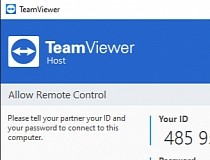

For many users, this is all it took to resolve the problem so make sure you try it out! DNS and Winsock issues – DNS addresses can be changed and Winsock can be reset.Antivirus or firewall issues – If TeamViewer’s access to the Internet is prevented by the firewall or antivirus you have running, make sure you try making an exception for its main executable file.Deleting its entry will cause Windows to re-create it so try that to resolve the problem. Wrong settings in the ‘hosts’ file – The ‘hosts’ file contains important information about apps connecting to the Internet and it’s possible that the entry for TeamViewer got corrupted.

While in most cases an attacker requires an existing session on a system, if the registry/configuration keys were stored off of the machine (such as in a file share or online), an attacker could then decrypt the required password to login to the system. The latest version still uses the same key for OptionPasswordAES but appears to have changed how the Unattended Access password is stored. With versions before v9.x, this allowed for attackers to decrypt the Unattended Access password to the system (which allows for remote login to the system as well as headless file browsing). If an attacker were to know this key, they could decrypt protect information stored in the registry or configuration files of TeamViewer. It used a shared AES key for all installations since at least as far back as v8, and used it for at least OptionsPasswordAES in the current version of the product. TeamViewer Desktop through allows a bypass of remote-login access control because the same key is used for different customers' installations.


 0 kommentar(er)
0 kommentar(er)
